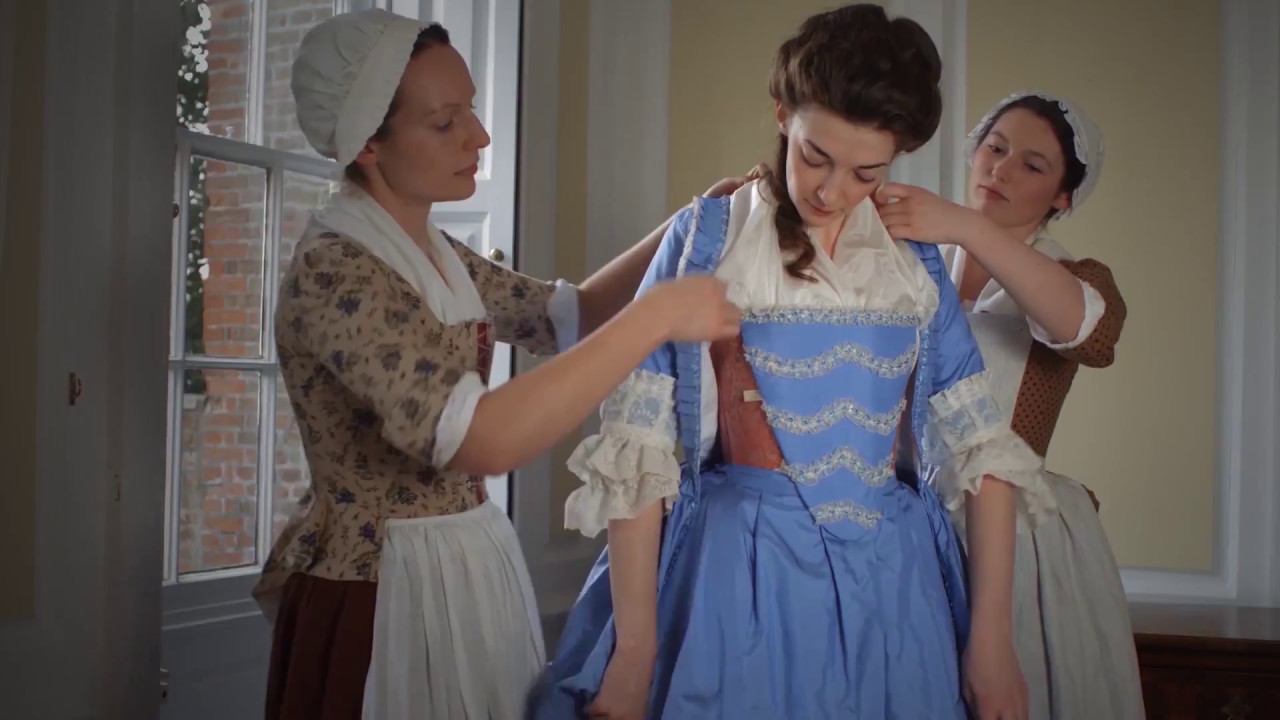Womens dress in the 18th century
Getting Dressed in WW1 - Young Woman, time: 4:37
1750–1775 in Western fashion
Dress in the 18th century referred to the overall fashion for everyone and not a single garment.It was the total look from head to toe.Full dress would refer to the most formal, fashionable look.
Women turned their hair up in the back often in a knot.Woollen or quilted waistcoats were worn over the stays and under the gown for warmth, as were petticoats quilted with wool batting, especially in the cold climates of northern Europe and America.Womens dress in the 18th century Women's clothing catalogs fashion Close-fitting sleeves just past the elbow were trimmed with frills or ruffles, and separate under-ruffles referred to as engageantes in modern terms, of lace or fine linen were tackedto the inside of the gown's sleeves, [9] or perhaps to the shift or chemise sleeves.Women's clothing styles retained the emphasis on a narrow, inverted conical torso, achieved with boned stays, above full skirts.Not only were cashmere shawls imported from India worn with the newly fashionable neo-classical gowns, they were also made into gowns.Working class men also wore short jackets, and some, especially sailors, wore trousers rather than breeches.
The idea of a unique character was becoming an important concept that spanned many types of media including books and prints as Britain wanted to distinguish itself from France.Wikimedia Commons has media related to 18th-century fashion.In other projects Wikimedia Commons.The waist was not particularly small.In Heilbrunn Timeline of Art History.After reaching their maximum size in the s, hoop skirts began to reduce in size, but remained being worn with the most formal dresses, and were sometimes replaced with side-hoops, or panniers.
Результатов: 768

In Heilbrunn Timeline of Art History.Victoria and Albert Museum The world's leading museum of art and design.The long-waisted, heavily boned "stays" of the early s with their narrow back, wide front, and shoulder straps gave way by the s to strapless stays which still were cut high at the armpit, to encourage a woman to stand with her shoulders slightly back, a fashionable posture.The material of this hand-sewn gown has a dotted ground and is printed in a repeating pattern of floral sprays.Stays forced a proper standing posture.Shoes had high, curved heels—the origin of modern "louis heels"—and were made of fabric or leather, with separate shoe buckles.
Victoria and Albert Museum

Результатов: 328

Read our cookie policy to find out more.Waistcoats could be made with or without sleeves.They offered back support for heavy lifting, and poor and middle class women were able to work comfortably in them.Home Visit Opening times Open daily from The French and English styles of fashion were very different from one another.The period saw fashions for elaborate wigs, rich embroidery and full skirts.